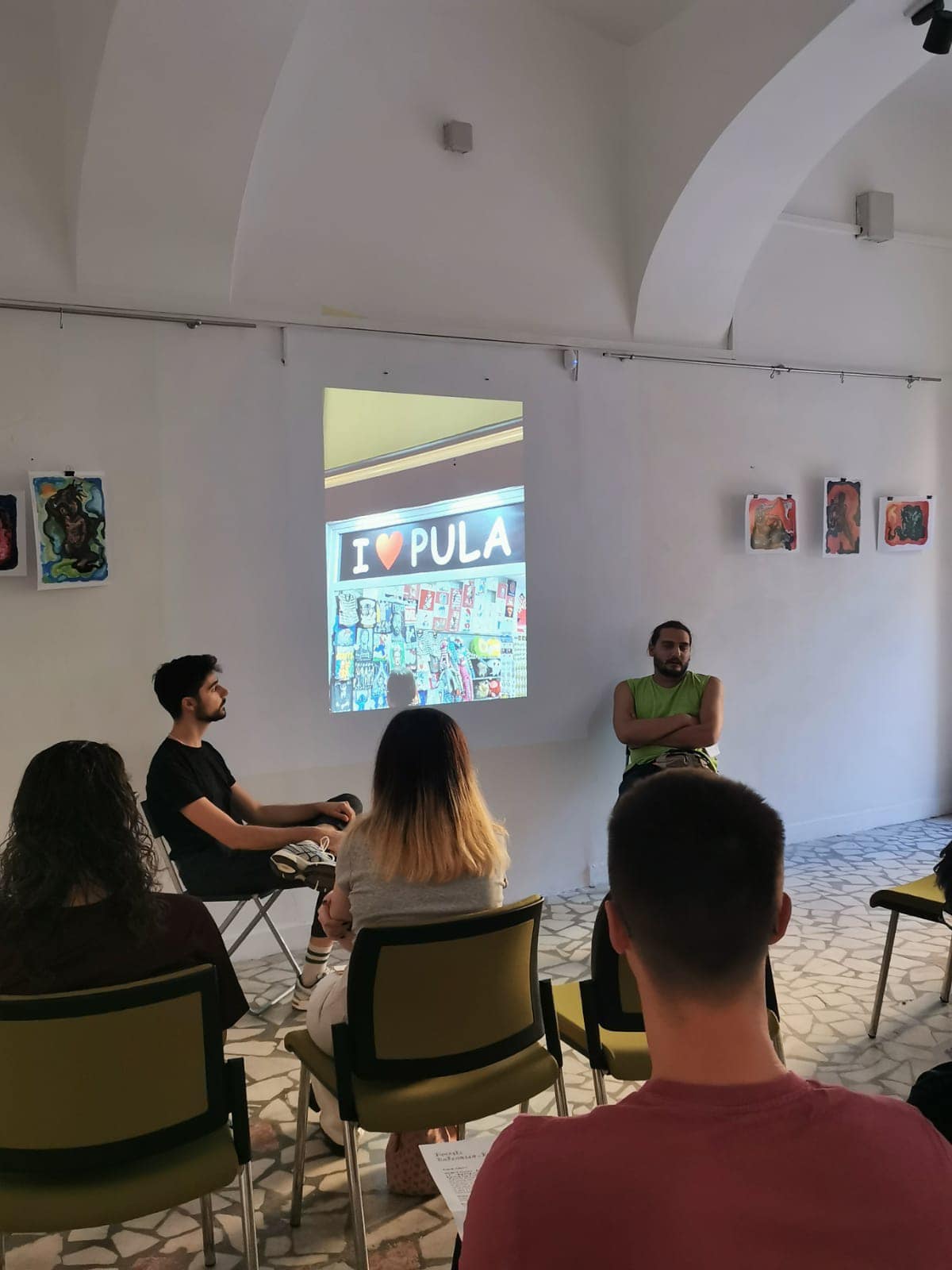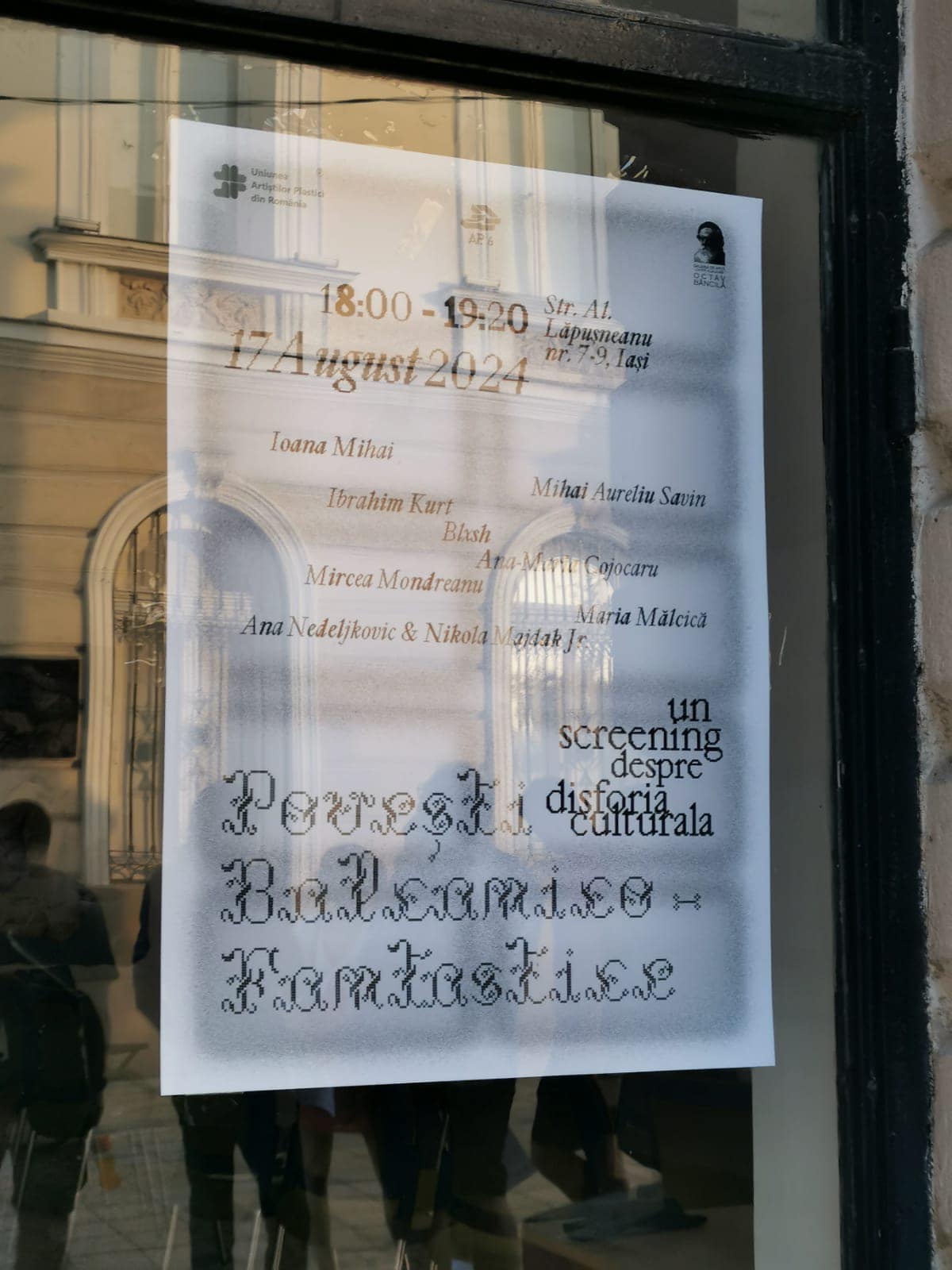

This project was part of the international screening ”Cultural Dysphoria” that took place in august of 2024 at Octav Băncilă Gallery in Iași, organized by Radu-Mihai Tănasă and curated by Cristiana Ursache. The screening event was followed by a Q&A . The text written about/within the project serves both as an explanation and as an integral part of the video. Given this fact, the piece is recited posthumously by Toma Caragiu, a famous Romanian actor from the communist era, who is known today primarily for his short, witty televised monologues. This was made possible by cloning his voice using AI technology.


The video work, by itself, is slideshow of personal photographs taken during a holiday in Pula , Croația (2024). The common denominator of all the photographs is the depiction of the city’s name, written in an official and legal manner, in both physical and digital spaces.
For non-Romanian speakers, it is important to note that the name of the Croatian city, “Pula,” is a vulgar slang term in the Romanian language, referring to the male genitalia. It is considered offensive and is avoided in formal or polite contexts. In Romania, this word is typically seen in public spaces only in unauthorized forms, such as graffiti.
A more detailed explanation can be heard (for a written version scroll to the end of the page) in five different languages, recited by the digitally cloned voice of the late Toma Caragiu in the video works presented below:
„faux amis/false friends” , 2 minutes and 33 seconds, Iași-Pula, România-Coatia, 2024
faux amis/false friends
The acts of communication that do not occur in real-time, unmediated, between two human agents, in which the interpretation of the information transmitted (by the receiver) happens almost simultaneously with the issuance of that information (by the sender), could be described as acts of delegated communication. In order to delegate information, it is necessary to arrest it in an objectified form (or technologically performative) constructed according to general language conventions.
However, when these conventions function exclusively within a specific context, the information delegated to the graphic sign (in our case) can be either invisible (if it involves an alphabet different from that known to the receiver) or altered, in the case of coincidences known as “false friends.” I personally encountered such a coincidence during a visit to the Croatian coast. What, for the population of the city in question, is a proper noun with a strong official character, for me (and for other Romanian speakers), the word in question is a pejorative common noun.
Thus, the four letters, in the order in which they are arranged, in Iași, for example, can only be read in the public space through the least official and legal methods (through anonymous vandalism of private or public property), unlike the photo-documented case, where the same four letters, in their natural order, were materialized in the public space in the most official and least anonymous ways, from road signs placed by authorities to posters for cultural events and even to tax receipts or drainage channels, implicitly, in different materials and typographic characters.
(personal text)